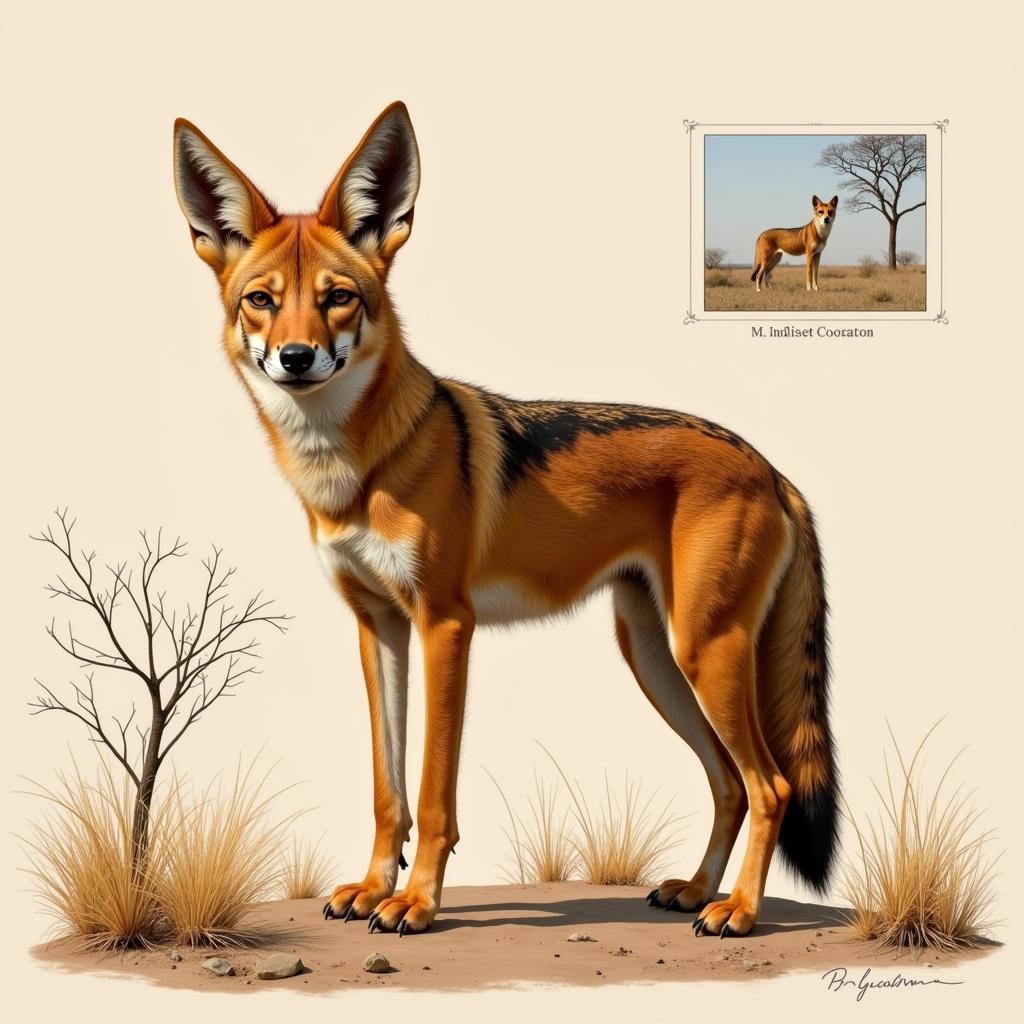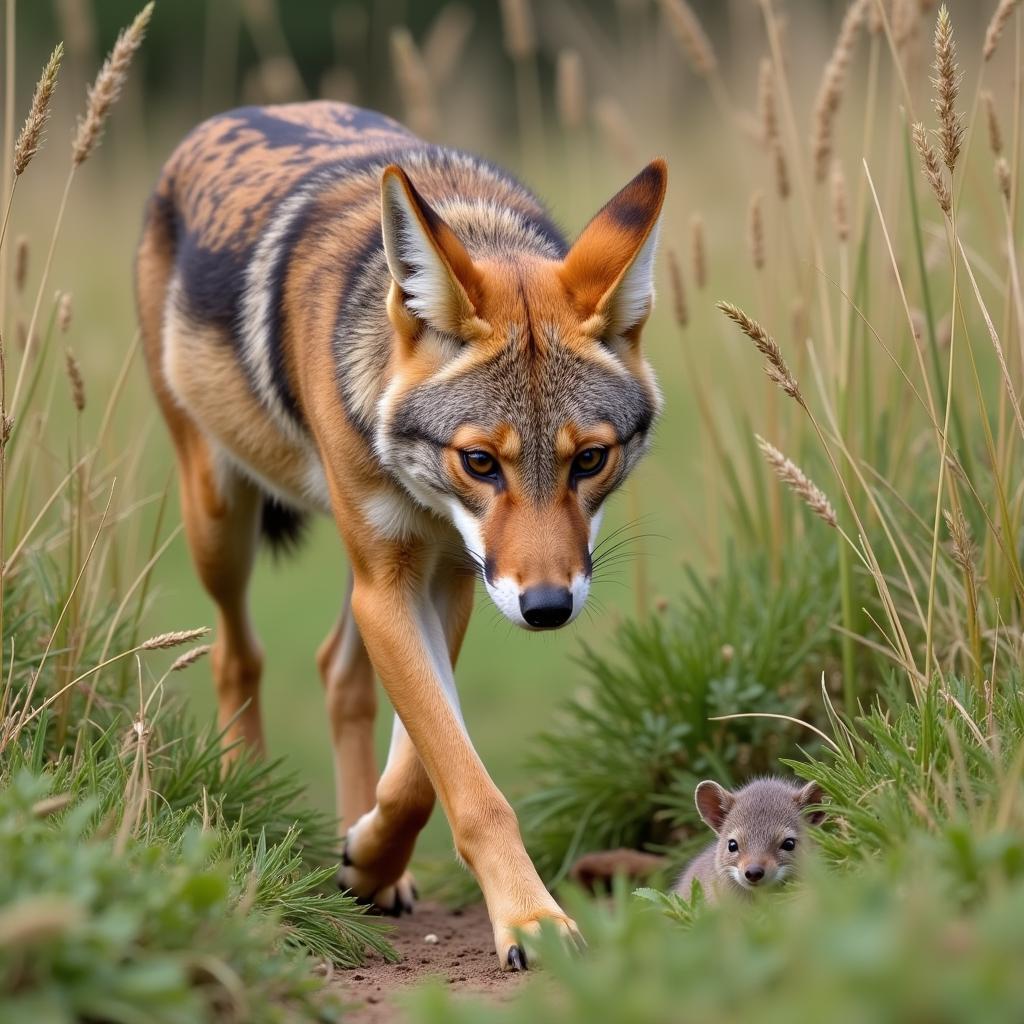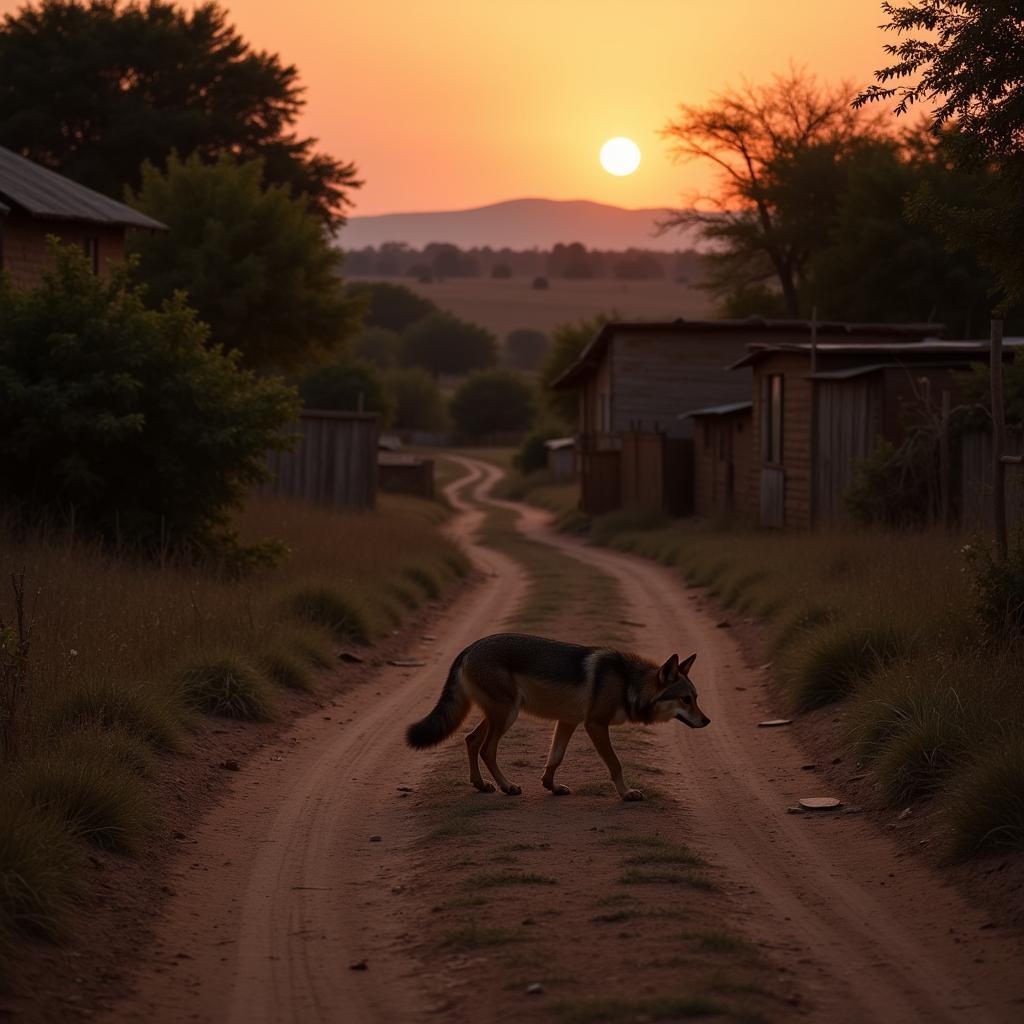Unveiling the Secret Life of the African Coyote
The African Coyote, often shrouded in mystery and misconception, holds a unique place within the tapestry of the continent’s wildlife. Far from being a mere scavenger, this cunning canine plays a vital role in maintaining ecological balance across diverse habitats, from the savannas to the fringes of human settlements.
Debunking the Myths: Understanding the African Coyote
While often compared to its North American counterpart, the African coyote, scientifically known as Canis lupaster, possesses distinct characteristics that set it apart.
Appearance and Adaptations: A Master of Survival
 African Coyote Physical Adaptations
African Coyote Physical Adaptations
Smaller in size with a lean, agile build, the African coyote is remarkably well-suited to its environment. Its reddish-brown coat provides excellent camouflage, while its long legs and sharp claws enable it to chase prey with impressive speed and agility.
Dietary Habits: An Opportunistic Eater
Contrary to popular belief, the African coyote is far from a picky eater. Its diet encompasses a wide range of food sources, showcasing its adaptability and resourcefulness.
- Carnivore at Heart: Small mammals, birds, reptiles, and insects form the bulk of its diet.
- Savvy Scavenger: They are adept at scavenging carrion, often trailing larger predators to capitalize on leftovers.
- Seasonal Supplements: Fruits, berries, and other vegetation are readily consumed when available.
This diverse palate allows the African coyote to thrive even in environments with limited resources.
The African Coyote’s Role in the Ecosystem
As a highly adaptable and widespread species, the African coyote plays a crucial role in maintaining the health and balance of its ecosystem.
Population Control: A Natural Regulator
By preying on rodents and other small animals, African coyotes help regulate populations, preventing potential imbalances that could impact vegetation and other species.
Seed Dispersal: An Unintentional Gardener
Through their consumption of fruits and berries, African coyotes inadvertently contribute to seed dispersal, aiding in the regeneration and diversity of plant life across their range.
 African Coyote Hunting Strategies
African Coyote Hunting Strategies
Competition and Coexistence: Navigating a Complex Web
The African coyote shares its habitat with a myriad of other carnivores, including jackals, hyenas, and even lions. While competition for resources exists, their presence also highlights the interconnectedness of the ecosystem.
“The African coyote’s presence, even amidst larger predators, underscores its ecological significance. Their adaptability and resourcefulness make them key players in maintaining the delicate balance of their environment,” explains Dr. Amani Jabari, a wildlife biologist specializing in African canid behavior.
The Human Element: Challenges and Coexistence
The relationship between humans and African coyotes is complex and often characterized by both conflict and coexistence.
Livestock Predation: A Source of Conflict
In areas where human settlements encroach upon coyote territories, conflicts can arise, particularly concerning livestock.
Disease Transmission: A Shared Concern
As with many wildlife species, disease transmission can pose a risk, both to coyotes and domestic animals.
Mitigating Conflict: A Path Toward Harmony
Understanding coyote behavior and implementing preventative measures, such as proper livestock protection and responsible waste disposal, can help minimize conflict.
 African Coyote Near Human Settlement
African Coyote Near Human Settlement
“Building tolerance and promoting coexistence is crucial for the long-term survival of both humans and African coyotes,” emphasizes Dr. Jabari. “By understanding their ecological role and addressing potential conflicts responsibly, we can foster a more harmonious relationship.”
Unveiling the Secrets: A Call for Continued Research
The African coyote, though often overlooked, is an integral part of Africa’s rich biodiversity. Continued research is crucial to fully understanding their behavior, ecological significance, and the complexities of their interactions with both humans and other species. Only through deeper knowledge and appreciation can we ensure the conservation and protection of this fascinating canine.

